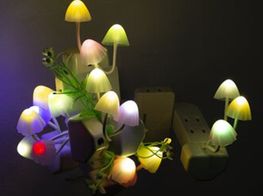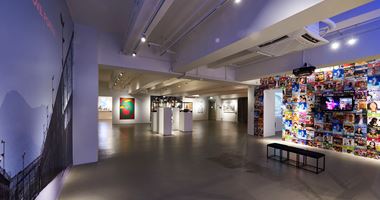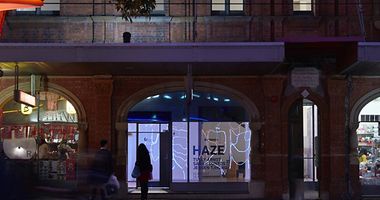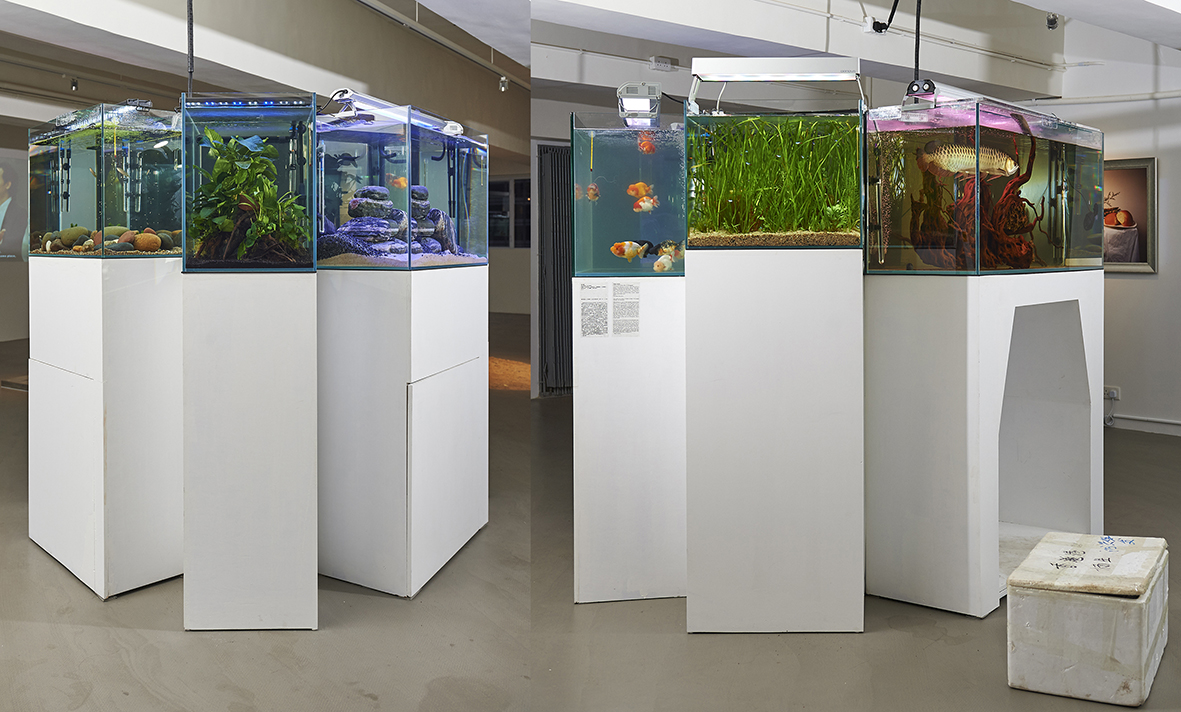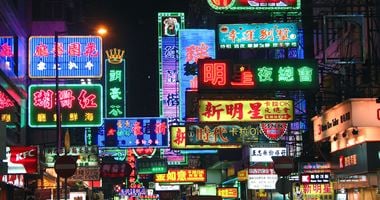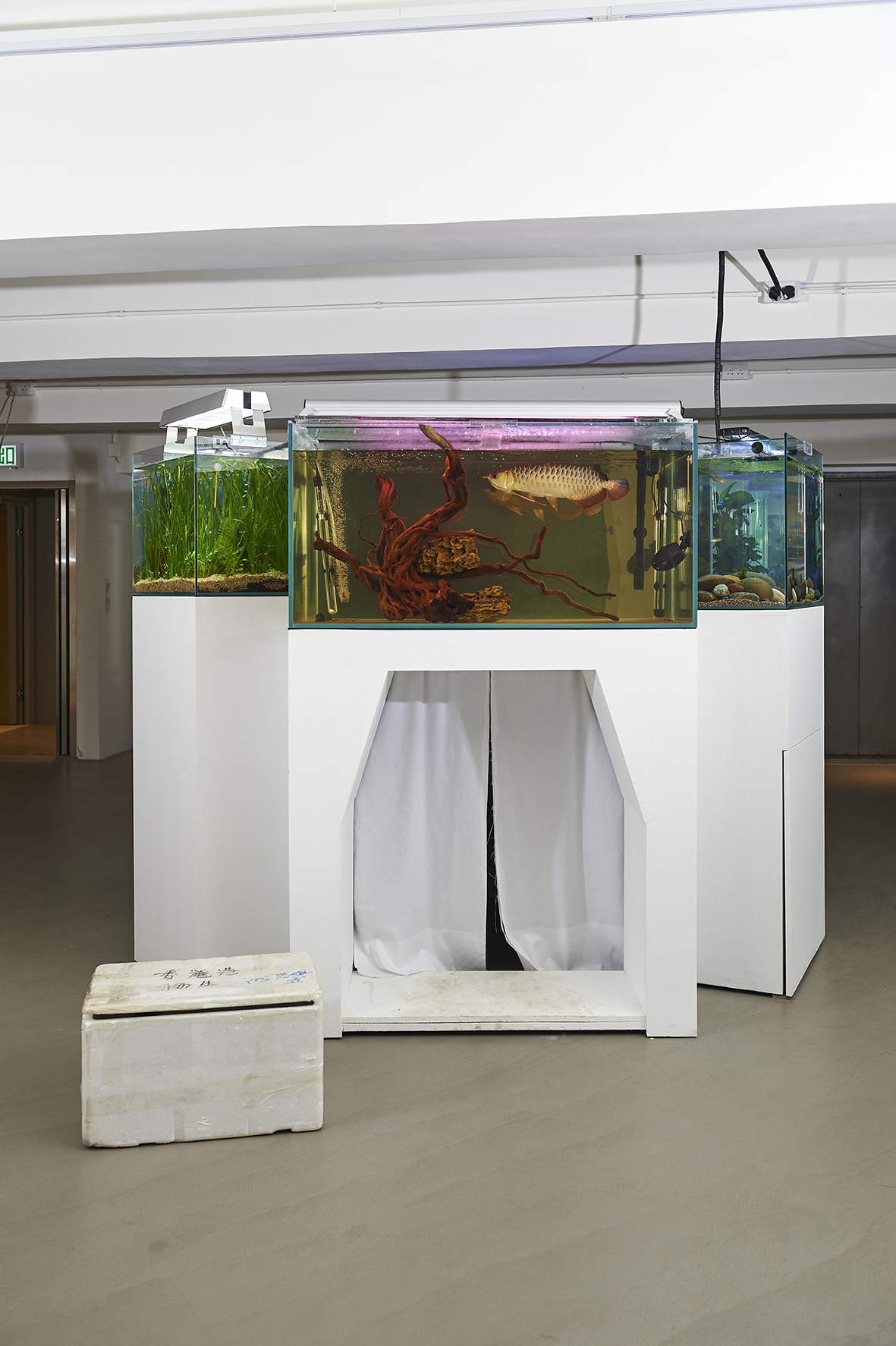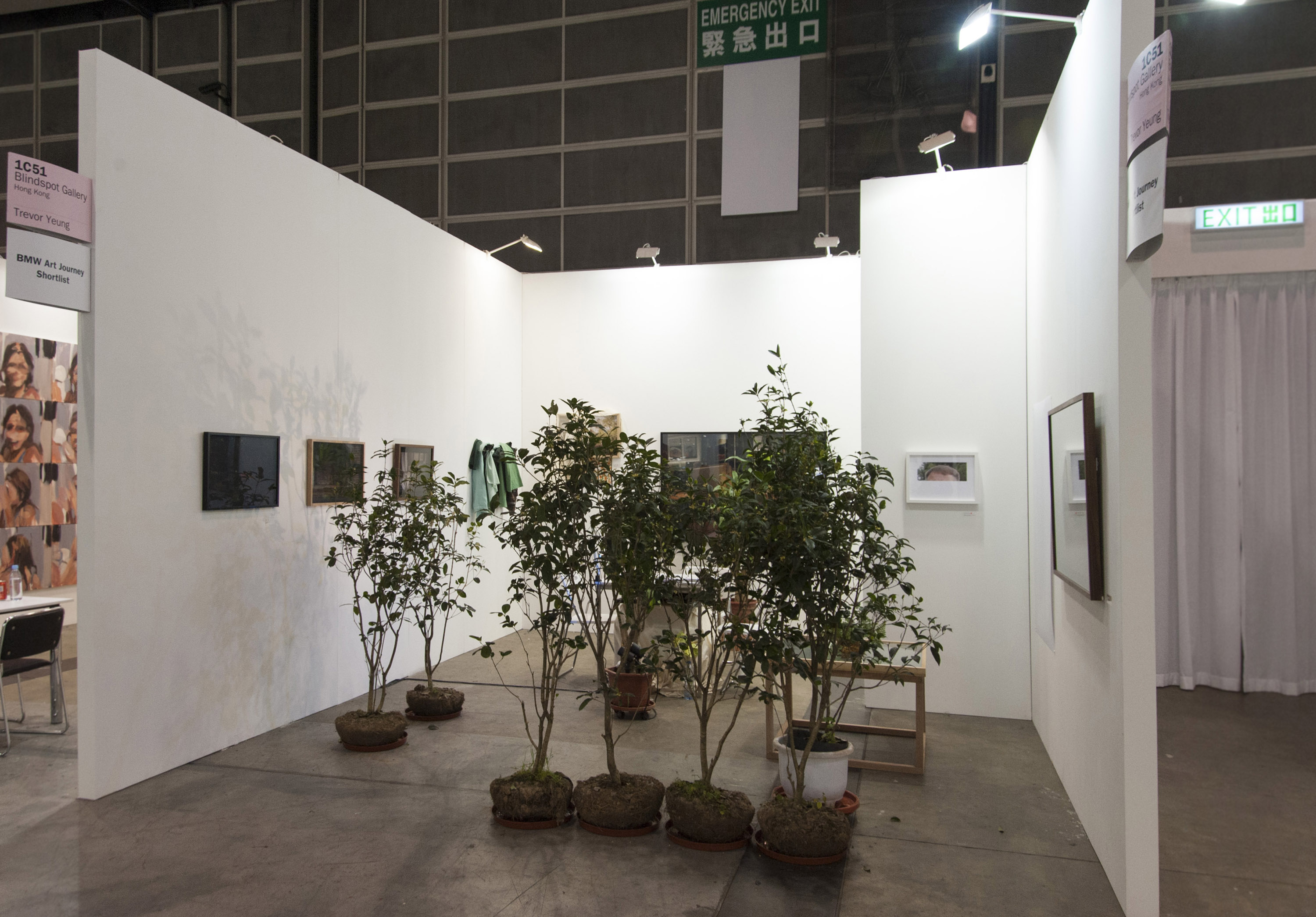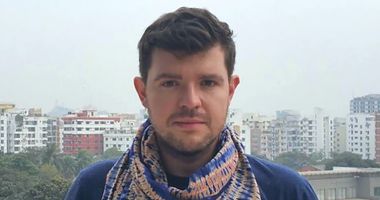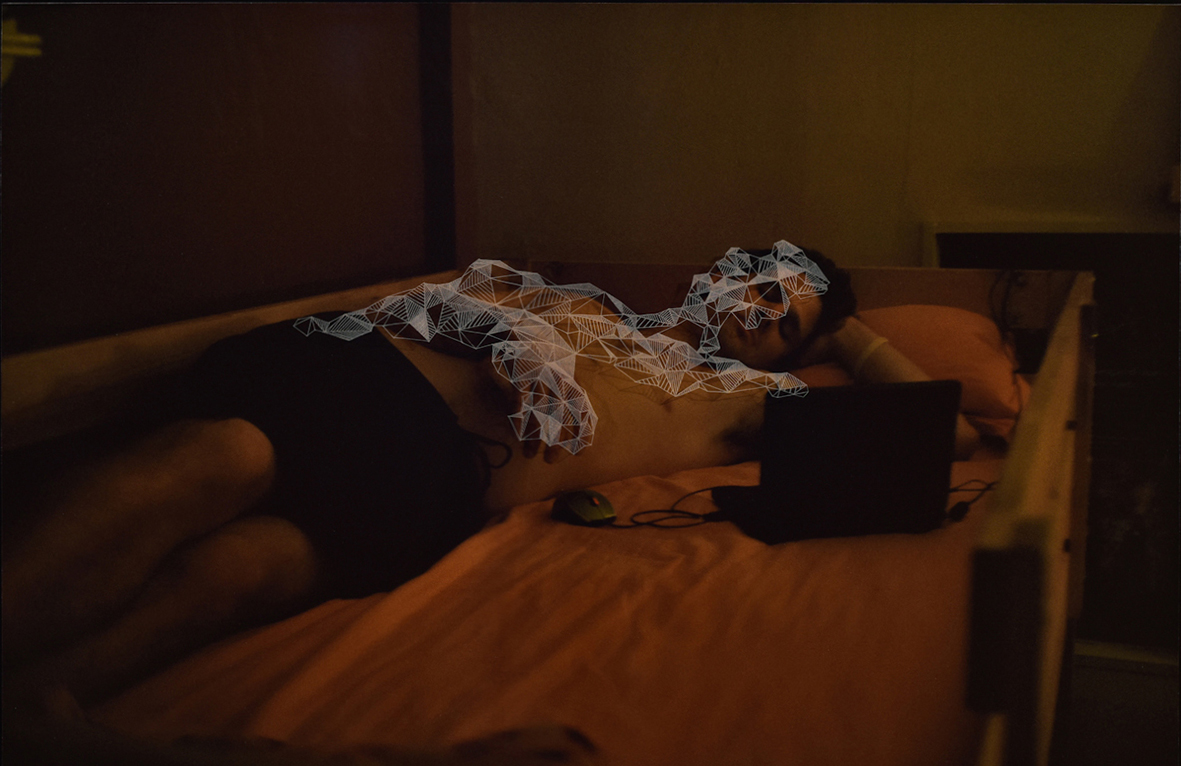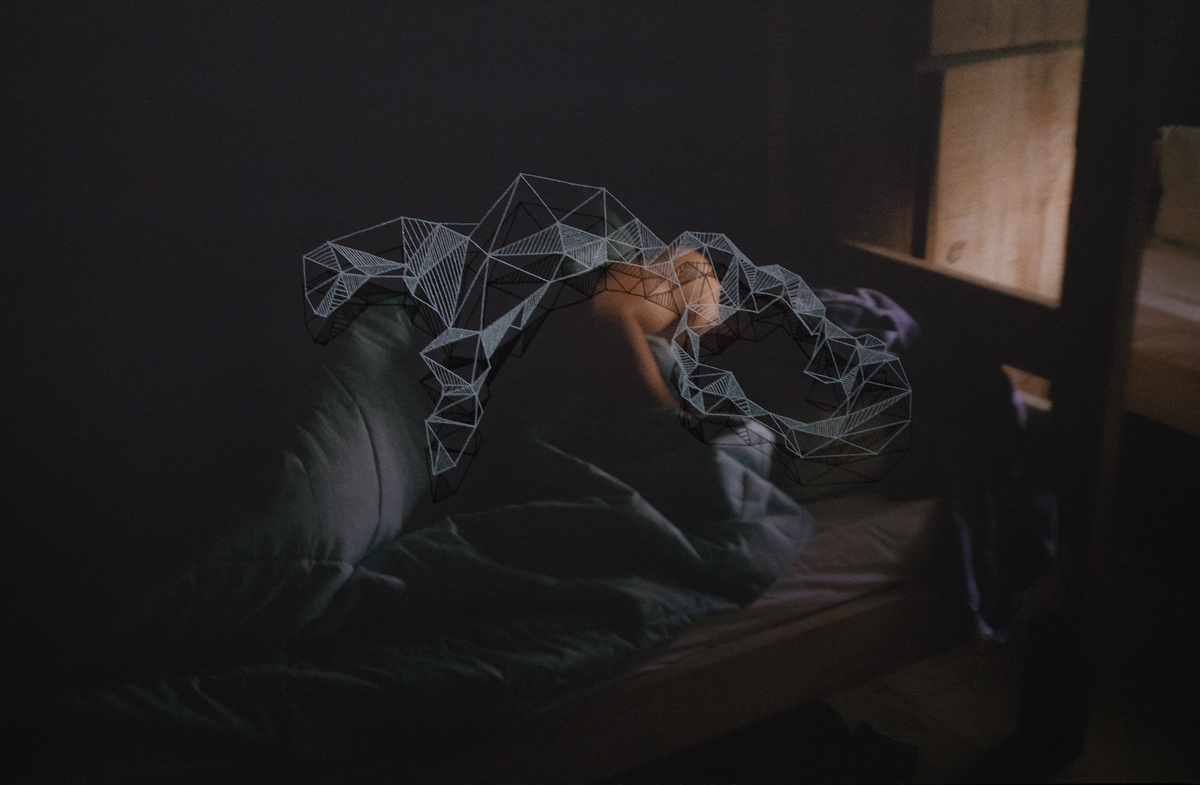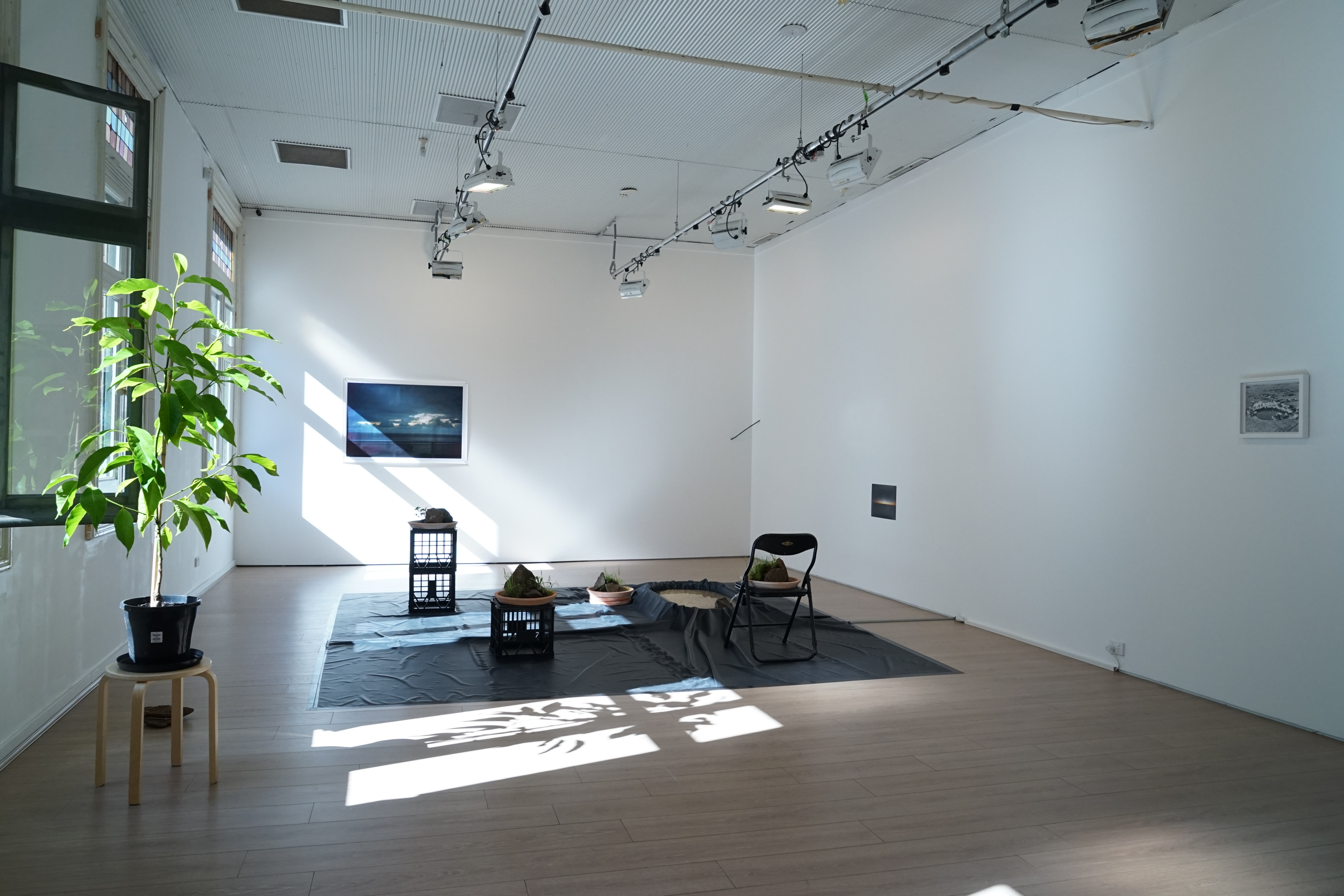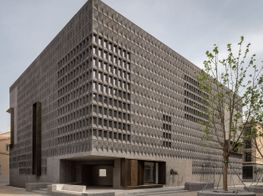Trevor Yeung
Trevor Yeung. Courtesy the artist. Photo: South Ho.

Trevor Yeung. Courtesy the artist. Photo: South Ho.
I would see him from time to time at art events, but it was some time before I saw his work. When I finally did, I found it conceptually intriguing, psychologically charged, and somehow quietly emotional. The first work by Yeung I encountered was a photograph in Hong Kong collector William Lim's home, Sleepy Bed (Singapore Hostel 1) (2011).
It came from the artist's 'Sleepy Bed' series (2010–ongoing), comprising dimly lit images of individual men sleeping. The series suggests a familiarity between the photographer and his subjects, when in fact they are clandestine shots that the artist took of men he shared hostel rooms with. They embody voyeurism at its most blatant; they are images of stolen intimacy, which suggest both a longing for and a fear of interaction. The work in Lim's collection has ink-stained wood and engraved glass across its surface, partially covering the shadowy male figure. It is a reminder that, in this work, the body presents itself as an object, and any sense of intimacy is unilateral.
Yeung is a consummate observer of humans. In discussing the 'Sleepy Bed' series, he speaks of how emotionally secure people sleep with their body open, often with covers thrown back, while he himself feels less sure, sleeping fully dressed with the covers pulled tight. The series was presented at Art Basel Hong Kong 2015 in a solo exhibition with Blindspot Gallery. Garden Cruising: It's not that easy being green was selected as a standout presentation and Yeung was subsequently shortlisted for the BMW Art Journey Award.
I know I cannot control audiences, but I try and direct them towards a particular experience.
Inside the booth, works from the 'Sleepy Bed' series were presented along three walls, but to see them properly, fairgoers had to weave through a permeable barrier of plants at the entrance. Yeung designed the arrangement having observed systems of visitor interaction at previous iterations of the fair. Characteristic of his work, the presentation explored a system of control insofar as his layout intended to dissuade those less curious viewers from entering.
This exploration of social structures and use of plants in Yeung's work is not unusual; he often uses vegetation and other living or natural forms as a pretext to describe human processes, systems, and relations. For the 10th Shanghai Biennale in 2015, he presented Maracujá Road (2014), which consists of an elaborate bamboo and metal pergola-type structure situated above 80 potted passionfruit plants. The structure above the plants suggests an ultimate aspiration for their growth, yet an impossible one as they will never grow high enough. Catherine Shaw, writing for Wallpaper, describes it as the standout work of the Biennale, and 'a striking metaphor of modern life'.
In this interview, Yeung speaks about his background as an immigrant to Hong Kong and the ideas underlying his work. He also discusses his 2016 exhibition at 4A Centre for Contemporary Asian Art in Sydney, Sea Pearl White Cloud. The show at 4A was the second stage of a project that was first presented at the Observation Society in Guangzhou, one of China's leading non-profit art spaces.
ADCould you tell me about your background?
TYI was born in Mainland China, and I moved to Hong Kong when I was very young. But we always travelled back to China where we spent very summer with my grandfather, or close to my father's restaurants. My grandparents were in a village that wasn't fully developed.
When I was little, there was a great deal of what I call leisure spaces. But then a great deal of development happened. My grandparents had a fish pond in front of their house, but due to construction, the pond became shallower and the fish disappeared. There were also frogs, and I caught tadpoles there.
My grandparents spoiled me. They had chickens and I kept the chicks as pets. I also had rabbits. So I have always been interested in having pets. I had fish and ended up having an aquarium. We had a turtle, too.
ADAnd [laughs] ... where are we going with this?
TYThis was the beginning of my interest in control! My art is always about control. During high school, I had my own aquarium. I started to understand that to keep the fish alive you need to have a perfect system: the perfect oxygen system, plant system, and so on. You have to be careful that it runs well so the fish won't die. So I became interested in this idea of making sure the system works well.
When I moved to university, I started to collect plants and found they were easier to handle. Hong Kong Baptist University was good because they didn't require students to pick a major, so I could choose what I wanted to focus on. At this point, I started to include plants in my work.
In the past, I have tried to work with animals, but didn't know how to look after them. I worked with koi and wanted to work in relation to the movement of fish, but the fish would die. When you work with animals, you have to be very sensitive to moral issues.
ADWhen did you start finding your own voice?
TYI started to find my voice when I did my final year project for which I worked with five visually impaired people. It was part of the Baptist University's course work.
ADTell me about the work you created.
TYIt was a work that used photography and sound. I presented image pairs: one portrait of me taken by the visually impaired person, and one image taken by me of the visually impaired person. I interviewed each collaborator, and in relation to the images, I created a container with braille on it, which contained a speaker that played a conversation between the collaborator and myself.
The conversation was about how the collaborator felt about me. Only once you understand braille, can you read it. I don't want audiences to understand it though. I tried to learn to read braille in Cantonese, and I had to translate and type it. I used nails to create the braille words.
The work related to my own fear of losing my sight. I wanted to trigger some thoughts about this in audiences.
ADWho were you most influenced by at that moment, and in relation to that work?
TYSophie Calle. You might recall her 'The Blind' series (1986), in which she photographed people born without sight and asked them to describe their image of beauty. The works featured a portrait of a blind person and a portrait of what that person considered to be beautiful.
This was a seminal work for me because it was the beginning of me working out the type of artist I wanted to be. I wanted to create works that made people think, but I didn't want to direct audiences as to what to think. I wanted to trigger some memories or feelings.
ADYou made a work using fish tanks for an exhibition at Para Site in 2015, A Hundred Years of Shame – Songs of Resistance and Scenarios for Chinese Nations. Could you tell me about the work, Live in Hong Kong, Born in Dongguan (2015)?
TYTo talk about my work, I first have to talk about a memory. Back when I was sitting the Hong Kong public exams, I had seven fish tanks. I worked with my fish tanks when I tried to ignore the stress of my exams.
Fish have nothing to worry about. I wanted to have that feeling. The fish cannot change anything, but they make me feel better. They help me escape from reality.
My room then was very small (about 3 x 4 metres). I shared the bedroom with my sister who is very kind; she allowed me to have the fish. The sound of the fish tanks made it easier for me to sleep. Different people have different ways of relief—for me, it is the fish tanks.
I wanted people to go into a space where they couldn't be seen. It was about being hidden.
When Cosmin [Costinas] and Anthony [Yung] asked me to be in the exhibition, they said they wanted to talk about shame. I have had an experience of shame. I was ashamed about my identity. I was ashamed about being an immigrant to Hong Kong, ashamed I didn't belong to Hong Kong. But I was lucky because I came when I was in kindergarten and knew English and Cantonese. But some people come when they are in primary school, so they are behind in both. And so it is easy to identify them, and people in my class teased them about their accent.
When the children were teased in my class, I didn't say anything. I didn't stand-up to the people teasing the immigrants. I was scared that I would get teased too. I didn't acknowledge that I was the same as them. My parents told me it was just a mistake that I was born in Mainland China; it was because I was born prematurely. I felt that while I didn't belong to Hong Kong, I also wasn't an immigrant. I was confused about who I was.
There is one way for people to know I was born in Mainland China: my identity card. The first letter of every identity card shows whether a person is born in Hong Kong or elsewhere. So every time I had to show my card or fill-out a form, I was very worried people would see that I wasn't born in Hong Kong.
When there are things that are hard to deal with, you always want to escape. You don't want to deal with difficult emotions. So I use the fish tanks to escape, and I wanted audiences to have that feeling too. I wanted them to feel as though they were within the fish tank.
ADI saw the work. It consisted of a chamber-like space that was created using aquariums. One could crouch down and enter the enclosed space and once inside one was surrounded by the aquariums and hidden from the world.
TYYes. I wanted people to go into a space where they couldn't be seen. It was about being hidden. I also chose fish farmed in China. Like me, they weren't originally born in Hong Kong but came in different ways, just like people in the 1960s and 70s did, like my parents.
In Hong Kong, you can get different types of fish, the cheaper ones are farmed in China and shipped over. The better quality ones are wild caught, or they are farmed in Germany. You can buy fish from the internet, and you can get a certificate.
But when I bought these fish, they didn't have a certificate, so they are second-rate fish. I am intrigued by these fish. You know that everyone has a history they don't want people to know. These fish—well, when you don't know about their actual background, they just look like any other fish. But they are cheaper because they are bought off the internet and they don't have a certificate.
A friend of mine visited the exhibition to see my work, and she went into the chamber and then came out and was very moved by it. She told me that she understood the feeling. She understood that feeling of being ashamed; she was also born in China, but she came later.
But of course, not everyone had the same experience. Another friend came to the exhibition. She finds social events very hard. She stayed inside the chamber for a while. It was a place to hide.
My work always deals with the physicality of the space it is shown in. I like to engage with audiences in terms of seeing how the work and the way it is presented impacts audiences.
ADYou talked about control before. To what extent is your work about trying to control audiences?
TYI know I cannot control audiences, but I try and direct them towards a particular experience. It's like a Chinese garden, or a shopping mall in Hong Kong. There are lots of hidden messages that force you to follow a particular path. Exhibitions are like this; they try to direct you.
When I do an installation, I am focused on how to manage a space and create an atmosphere. It is like a fish tank. I place things so audiences know how to move, but I don't control what they do. I provide different choices, and when they leave maybe they see something, maybe not. I try to retain a sense of flexibility. My work is about creating a system.
ADYour solo exhibition Garden Cruising: It's not that easy being green at Art Basel Hong Kong in 2015 seemed to be very much about exploring the system of viewing. What inspired this?
TYI was interested in how people engage with artwork or installation at an art fair. I previously worked at Para Site, and after graduating I helped coordinate their guided tours of Basel, so I understood how people are enticed to move into a booth.
People always have a point outside a booth where they can stand to see inside without going in. But equally there are galleries who choose not to show certain works, to entice you in or filter people out.
I wanted to design my installation to filter out people who were not curious to come in. I used plants as a barrier that people had to pass around. Before this booth, I had a work in the Shanghai Biennale and had the chance to visit the [Yuyuan Garden]. I was very moved by how Chinese gardens deal with space. In these gardens, there are points created that force you to stop and stay. I was influenced by this.
This exhibition was about observing both the artwork and the space. This was my first attempt at trying to control audiences. This was a particular setting whereby I wanted people to follow a particular route.
ADAt Art Basel, you showed works from your 'Sleepy Bed' series, in which you photographed people with whom you shared hostel rooms while they were sleeping. Tell me about creating these works.
TYSleeping is a very private, intimate state. When I was young, I shared my room with my sister. When I went to a hostel, I would share the room with six to eight people. It felt so weird to share this intimate space with strangers. I felt insecure about people sleeping in the same room.
When you meet people, you are always acting. But when you are sleeping, you are completely 'the real you'. When you watch someone sleeping, you can judge whether a person is secure or insecure. I have to wear clothes when I sleep because I am not confident about my body. Other people don't care. I was interested in observing this.
ADDid you gain the permission to take the images you took?
TYNo, and I felt bad about this. When I took the image of people sleeping, I felt like I was observing an object. I etched over the body I photographed. Doing the etching was about reinforcing the idea of the body being presented as an object. It removed the image from being a documentation of a person sleeping.
ADTell me about Sea Pearl White Cloud, the show you shared with Lucas Ihlein at 4A Centre for Contemporary Asian Art in 2016. The first part was shown at Observation Society in Guangzhou.
TYI wanted to connect both art spaces through the two cities: Guangzhou and Sydney. The first thing I thought about was the climate: the temperature and humidity. The humidity in Guangzhou is so high. When you move, it is like you have a layer of moisture that moves with you. I wanted to re-create that feeling for people in Sydney.
I was thinking about the way an art space often offers a contrasting temperature from the outside. When you are in hot places, it offers a cold climate. And when you are in places that are super cold, it provides a warm environment. They are places that offer comfort. So I was thinking about how the art space is a place meant to be comfortable for human beings, and they are also spaces that ensure the protection of an artwork.
ADSo is this in someway connected to your previous work?
TYMy work always deals with the physicality of the space it is shown in. I like to engage with audiences in terms of seeing how the work and the way it is presented impacts audiences. —[O]

